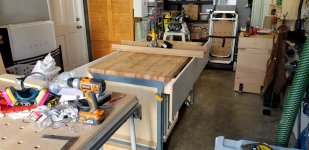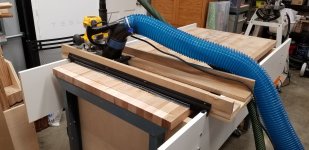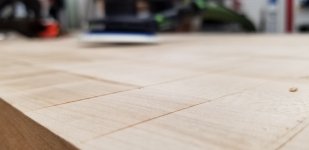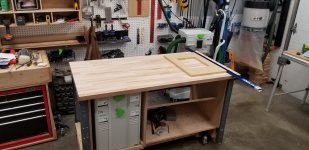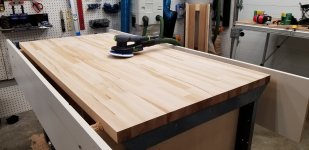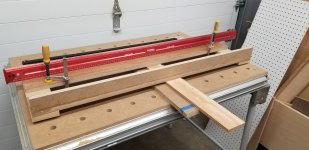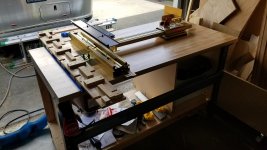I started another thread about shop upgrades to help reclaim space in my workshop. One of the suggestions was to combine on of my tables with my router tablehttp://festoolownersgroup.com/festool-tools-accessories/shop-upgrade-help/
Here is what I've got so far.
I bought an Inca Mastr-Lift ll, cleansweep and LS positioned (still waiting on the last one). After I ordered everything I discovered my table top had warped over the years. I made a sled for my old router and flattened to top this morning.
I have a question for those wo have done this before. My table is flat but I notice each pass looks stair stepped from each other. The height is very small, maybe 1/64th of an inch. Is this normal or did I not align something correctly with my rails?I'm thinking I can smooth it out with my ets 150.
Anyway, pictures:
Here is what I've got so far.
I bought an Inca Mastr-Lift ll, cleansweep and LS positioned (still waiting on the last one). After I ordered everything I discovered my table top had warped over the years. I made a sled for my old router and flattened to top this morning.
I have a question for those wo have done this before. My table is flat but I notice each pass looks stair stepped from each other. The height is very small, maybe 1/64th of an inch. Is this normal or did I not align something correctly with my rails?I'm thinking I can smooth it out with my ets 150.
Anyway, pictures:

